#Mordaunt Hall
Explore tagged Tumblr posts
Text
THE SCREEN: “Mae West Reveals Herself as a Circus Queen in “I’m No Angel” at the Paramount—Saturday's Millions”
I'M NO ANGEL, based on a story by Mae West and supported by Lowell Brentano; music and lyrics by Harvey Brooks, Gladys Du Bois and Ben Ellison; directed by Wesley Ruggles; a Paramount production. At the Times Square and Brooklyn Paramounts.
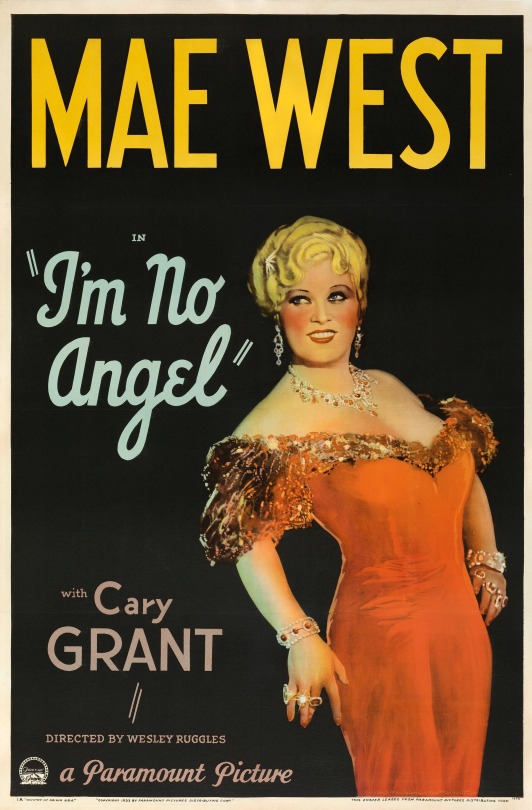
Tira .... Mae West Jack Clayton .... Cary Grant Bill Barton .... Edward Arnold Slick .... Ralf Harolde Alicia Hatton .... Gertrude Michael Kirk .... Kent Taylor Thelma .... Dorothy Peterson Benny Pinkowitz .... Russell Hopton Beulah .... Gertrud Michael The Chump .... William Davidson Rajah .... Nigel de Bruller Bob .... Irving Pichel Omnes.... George Bruggeman Harry .... Nat Pendleton Chauffeur .... Morrie Cohen Judge .... Walter Walker
by MORDAUNT HALL.
Arrayed in a variety of costumes which set off her sinuous form, Mae West is appearing at the Paramount in her latest screen vehicle, "I'm No Angel," a title which, as might be surmised, fits the leading character. Here Miss West, who wrote the story herself from “suggestions contributed" by Lowell Brentano, is beheld as a circus beauty named Tira, who wins applause and admiration by risking her blond head in a lion's mouth twice daily.
It is a rapid-fire entertainment, with shameless but thoroughly contagious humor, and one in which Tira is always the mistress of the situation, whether it be in the cage with wild beasts, in her boudoir with admirers or in a court of law.
Tira is ever ready with & flip double entendre and' she permits no skeleton to be found behind her cupboard doors. She has an emphatic personality, which proves a magnet for even social lights with millions. She receives costly presents, Including diamond necklaces, but she is hardly a gold-digger. She refrains from posing, preferring to keep to her natural slangy speech in her journey through the story from a tent to a penthouse.
She admits that she has thrown discretion to the winds, and she sometimes finds herself in an awkward predicament, but through a wily lawyer she succeeds in proving that she is guiltless. The feeble parts of this picture are those in which a criminal known as Slick is introduced. The less one sees of him the better one feels, for the production is interesting only as long as it proceeds on its merry route.
The glimpses of Tira making her impressive entry to the circus arena and then proceeding to the big cage with the roaring lions are depicted shrewdly. Tira does not actually stick her whole head in the lion's mouth, but contents herself by putting her face between the beast's jaws, which is quite enough.
Even this is set forth with a certain degree of fun, and one feels that Tira probably has a pistol ready for an emergency and that other circus employees are ready to shoot in the event that the beast starts to close its mouth. But one is apt to wonder whether they could possibly be quick enough. Society among the spectators is thrilled, all except one snobbish girl, who is furious because her fiancé is very enthusiastic over the performer's courage-and her beauty.
Later there comes the time when Tira puts her fair head into a court of law as the plaintiff in a breach-of-promise case. She sues Jack Clayton, whom she really loves, for $1,000,000, and it is not Tira's artful counsel who wins the case, but the circus queen herself. She cross-examines the defendant's witnesses and turns their testimony in her own favor, the unusual proceeding being countenanced by a judge whose sympathy Tira wins with the utmost ease.
Miss West plays her part with the same brightness and naturalness that attended her second film role. There is no lack of spontaneity in her actions or in the utterance of her lines. She is a remarkable wit, after her fashion. Cary Grant is pleasing as Clayton and Walter Walker is excellent as the considerate old judge. Gregory Ratoff does well as Tara’s lawyer. Wesley Ruggles has directed the film with his usual intelligence.
#Paramount Pictures#I’m no Angel#Mae West#Cary Grant#Edward Arnold#Ralf Harolde#Gertrude Michael#Kent Taylor#Dorothy Peterson#Russell Hopton#Gertrud Michael#William Davidson#Nigel de Bruller#Irving Pichel#George Bruggeman#Nat Pendleton#Morrie Cohen#Walter Walker#Mordaunt Hall#The New York Times
1 note
·
View note
Text



















Nun Appleton House
Hi guys!!
I'm sharing Nun Appleton House. This is the 13th building for my English Collection.
I added aa garden, which is my own creation and not the original of the house.
History of the house: The hall itself is built of reddish-orange brick with ashlar dressings and a Welsh slate roof in three storeys to a rectangular floor plan. It is grade II listed and now stands in some 200 ha. of parkland.
The estate was acquired by The 1st Lord Fairfax of Cameron, a Yorkshireman with a Scottish peerage, following the Dissolution of the Monasteries, from whom it descended to The 3rd Lord Fairfax of Cameron, the well-known English Civil War commander, who built the present hall in the late 1600s.
In his time (1651) the estate was the inspiration for Andrew Marvell's Upon Appleton House, a significant country house poem. Marvell was tutor to Thomas Fairfax's daughter, Mary. After the death of Mary (who had married The 2nd Duke of Buckingham) in 1704 the estate was eventually sold in 1711 to Alderman William Milner of Leeds who carried out many alterations to the house.
His son William was created the 1st Milner Baronet, of Nun Appleton Hall in the County of York, in 1717 and was later Member of Parliament for York. The estate then descended in the Milner family until 1875, when the estate's owner, Sir William Mordaunt Milner, 6th Baronet, was more interested in gambling than looking after it.
By 1877 it had been leased to William Beckett-Denison, a wealthy Leeds banker. After the death of Sir William Milner in Cairo in 1881, his brother Frederick inherited the estate and in 1882 married Adeline, eldest daughter of William Beckett-Denison. After William Beckett's gruesome death in 1890, the Hall and estate were sold to Angus Holden, a sometime M.P. (later created Baron Holden), a woollen manufacturer from Bradford, whose ownership was somewhat brief as he died in 1912.
The hall was now empty and many of the tenanted farms were sold. The estate was put up for auction in 1914 and again in 1917 and eventually acquired by a private company which felled many of the trees but by 1919 had gone into liquidation. It was bought in 1920 by Sir Benjamin Dawson, 1st Baronet, another Bradford textile manufacturer, who was High Sheriff of Yorkshire for 1951–52. During the Second World War the hall was taken over by the London Maternity Hospital.
When the stable block accidentally burnt down it was afterwards refurbished as a theatre and made available to the local community.
The property was bought from the last occupant, Sir Benjamin's daughter Joan Dawson, for £1.2 million in the 1980s by Humphrey Smith of the Samuel Smith brewing family. The house is now fenced off, empty, unused and deteriorating.
Video below check it out
For more info: https://www.facebook.com/story.php/?story_fbid=928431841986992&id=100044605540042&_rdr
----------------------------------------------------------------------------------------------------------------------
This house fits a 50x50 lot (I think if you lose the gaden and terrace it can fit a 50x40 too)
I furnished just the principal rooms, so you get an idea. The rest is unfurnished so you create the interiors to your taste!
Hope you like it.
You will need the usual CC I use:
all Felixandre cc
all The Jim,
SYB
Anachrosims
Regal Sims
King Falcon railing
The Golden Sanctuary
Cliffou
Dndr recolors
Harrie cc
Tuds
Lili's palace cc
Please enjoy, comment if you like it and share pictures with me if you use my creations!
Free to download blueprint: https://www.patreon.com/user?u=75230453
#sims 4 architecture#sims 4 build#sims4#sims 4 screenshots#sims4play#sims 4 historical#sims4building#sims4palace#ts4#ts4 simblr#ts4 gameplay#the sims community#sims 4#the sims 4#sims4 play#sims 4 royalty#sims 4 cc#sims 4 gameplay#thesims4#sims 4 legacy#sims4 build
53 notes
·
View notes
Text

”
Labour won a landslide UK election victory, bringing a crushing end to 14 years of Conservative rule.
The Labour leader is expected to become prime minister later on Friday after Rishi Sunak conceded, with voters giving Starmer a massive mandate to bring about change in Britain.
Speaking at Royal Festival Hall in London, Starmer said people would be waking up to the news of a Labour victory and Tory defeat “relieved that a weight has been lifted, a burden finally removed”.
Sunak’s party is on track to record its worst performance in a general election, with a record number of cabinet ministers set to lose their seats and big names such as Jacob Rees-Mogg, Penny Mordaunt and Grant Shapps ousted.”
Reform is worrying. :( Lib-Dems did well. I know true-blue Tories who voted Lib-Dem as they are just sick of what their party is doing. They could never bring themselves to vote Labour so they took a step to the centre. And Wales. Excellent. 👍 In a repeat of ‘97 Wales has no Tory seats at all.
26 notes
·
View notes
Text
Well, if you’re just joining us, the nation has delivered an all-night victim impact statement. Labour has won a landslide and the Conservatives have suffered their worst ever general election result. Keir Starmer – the prime minister – has promised “national renewal … to fight until you believe again”. Liz Truss has failed to save South West Norfolk, let alone “the west”. That is the big picture (if not the whole picture, with turnout and Labour’s vote share notably low). Meanwhile, it’s incredible to think that only a short while ago we thought we’d eradicated measles and Nigel Farage. Both have now been brought back, largely by the same people.
But look, after the 3am to 7am shift, no one will be able to say the right doesn’t do comedy. There were moments worthy of entire Netflix specials as in sports halls and community centres various Dickensian grotesques were ushered into their Christmas future, live on stage. Alas, it was going to take more than buying the Cratchits a turkey to get out of this one. Jacob Rees-Mogg heard his fate standing next to a candidate wearing a baked bean balaclava. He’ll be crying into Nanny’s starched bosom today. Committed sewage apologist Thérèse Coffey was pumped into the sea in Suffolk Coastal. Andrea Jenkyns had the middle finger given to her by the voters of Morley and Outwood. In Welwyn Hatfield, Grant Shapps chanted “supermajority” five times into the mirror, and then it came for him.
Then again, Michael Portillo losing his seat was supposedly 1997’s big moment. So perhaps the question is: in two years’ time, which current hate figure will be presenting a cosy travelogue on Europe’s most picturesque illegal migration routes? Alternatively, do remember that one person’s onstage humiliation is another person’s milk round for directorships in the arms trade.
Speaking of absolute weapons, hat twat George Galloway wimped out of his own count in Rochdale, presumably out of fatigability. He lost to Labour. There was jubilation for the Lib Dems, who finished not a million miles behind “the natural party of government”, and for the Greens, who won all four of their target seats. The SNP can now squeeze its MPs round the flip-down dining table of a motorhome. Referendum arguments may move to Northern Ireland, with Sinn Féin now that nation’s largest Westminster party.
As for Reform … Farage won in Clacton, a constituency for which he will now have to hold surgeries, presumably by Zoom link from his hot desk in the US presidential colon. Or as he put it in his victory speech: “This is the first steps of something that is going to stun all of you” – at least confirming his political abattoir will be bolt-gunning its victims unconscious first. Farage is the horror version of Inside Out, where Mendacity is only just holding off Racism at the control console. His cultural hinterland extends to a single Goodbye, Mr Chips DVD he got free with the Sunday Times in 2008, and the idea that this hollow chancer should still be one of the most significant politicians of the age says everything about the age.
Anyway, back to the Conservatives’ four-hour in-memoriam reel. Penny Mordaunt, Jonathan Gullis, Michael Fabricant, Gillian Keegan, Steve Baker, Alex Chalk, Johnny Mercer, Michelle Donelan, Victoria Prentis, Liam Fox, Mark Harper … all out, along with many more. So many cabinet ministers fell that the ones who live may actually develop survivor guilt. It’s currently unclear how gruesome things will be among the extant Conservatives in this post-apocalyptic world. As a fictional president once wondered of Dr Strangelove, will the living not end up envying the dead? Far from it, Strangelove reassures him, forcing down an involuntary Nazi salute. What will abound is a spirit of bold curiosity for the adventure ahead!
Speaking of which, 13th fairy Suella Braverman finally turned up, holding on in Fareham and cooing: “I am sorry that my party didn’t listen to you. The Conservative party has let you down.” Expect to see her humbly attempting to disembowel fellow survivors Jeremy Hunt and James Cleverly in the forthcoming trial-by-combat for what convention demands we style as “the soul of the Conservative party”.
At his count, Rishi Sunak explained he’d already conceded the election in a congratulatory call to Keir Starmer, adding, “I take responsibility for the loss.” In Downing Street, he confirmed he would be standing down as Tory leader in some sort of due course, stressing, “I have heard your anger.” Then, instead of yet another speech straight from the Tortured Prime Minister’s Department, this one offered humility and magnanimity, as well as a pointed reminder of the positive (and fragile?) progress that saw him become the UK’s first British-Asian prime minister. What a contrast to the relentless negativity of his past six weeks. Sunak’s campaign was conducted like a gender-reveal party where the device that’s meant to release the puff of blue smoke accidentally functions as a pipe bomb and burns the house down.
It also closed out several years of mindboggling chaos, dysfunction and national decline. They won’t be playing anything from this album on the Conservative party’s Eras tour. The Tories have cycled through five prime ministers over the past eight years, to the point where they were recently found going through the rubbish, pulling the first guy back out, thinking, “Actually, he doesn’t look half bad now,” and making him foreign secretary. This is the behaviour of addicts.
Not that they have the monopoly on erraticism. Any dispassionate view of these results suggests the fabled post-Brexit “realignment” is more of a dealignment – the huge sweeping gains of this or that political moment able to be reversed in previously unthinkable timespans. Volatility might now be our defining electoral characteristic, and a rise in sectarian politics cannot and should not be ignored. Because hey – what’s the worst that can happen with that one? Meanwhile, many people who derided the simplistic “Get Brexit done” slogan in 2019 have pretended not to notice that the winner here went out under the even more gnomic banner of “Change”.
Yet in the wider global context, what a win. One summer evening in 1914, the foreign secretary, Edward Grey, famously remarked: “The lamps are going out all over Europe.” In our own times, a darkening has recently felt at hand, as hard- or extreme-right parties have gained ground across the continent, to say nothing of the US. But here – in this country, in this moment – a different direction has been taken. That matters today, and anyone not on the wingnut fringes, who hopes to avoid those gathering shadows, should wish Keir Starmer good luck with his task. For plenty who would snuff out the lamps are also rising – increasingly, they walk among us.
19 notes
·
View notes
Text
Barbara Stanwyck by Bert Longworth for Baby Face (1933).


The now-iconic pre-Code film about a woman who uses sex as power to advance her career came from an original story written by Warner executive Darryl Zanuck under the pseudonym Mark Canfield.
In a harshly negative review, NY Times critic Mordaunt Hall implied that Zanuck lost his job at WB in April 1933 because of the fight with censors over Baby Face’s more blatant sexual themes but others have pointed to an internal salary dispute with Jack Warner.
The film was said to be instrumental in the enforcement of the Hays Code. "Blue and nothing else," wrote a critic for Variety. "Anything hotter than this for public showing would call for an asbestos audience blanket."
Barbara wears her Orry-Kelly gown in a still from Baby Face (1933) and stars in the filme with co-star George Brent. The film was the third of five films they made together. Trivia: A young John Wayne had an early minor role as one of Lily Powers’ conquests in the film.


[Source]
7 notes
·
View notes
Text








Her Night of Romance (1924) The hard-to-please New York Times' Mordaunt Hall (Jan. 13, 1925) said it is "a lively pictorial farce-comedy" that "is jolly enough to cause one to forget the winter's snow and chilling blasts." In praising the principals, he said, "In this vehicle, Miss Talmadge is gay and charming, affectionate and coy, always making the most of her expressive eyes. Ronald Colman . . . gives an easy and natural performance. . ."
#her night of romance#her night of romance 1924#ronald colman#constance talmadge#my gifs#any excuse to post HANDS#anguished screams as i try to explain i need a man to lie about his medical license to me so i can fall in love with him#old hollywood#classic hollywood#classic film
7 notes
·
View notes
Text
Commons Vote
On: Finance (No. 2) Bill: Third Reading
Ayes: 215 (98.6% Con, 0.9% Ind, 0.5% DUP) Noes: 19 (94.7% SNP, 5.3% PC) Absent: ~416
Likely Referenced Bill: Finance (No. 2) Act 2010
Description: A Bill to grant certain duties, to alter other duties, and to amend the law relating to the National Debt and the Public Revenue, and to make further provision in connection with finance.
Originating house: Commons Current house: Unassigned Bill Stage: Royal Assent
Individual Votes:
Ayes
Conservative (211 votes)
Aaron Bell Alan Mak Alberto Costa Alec Shelbrooke Alex Burghart Alex Chalk Alicia Kearns Alok Sharma Amanda Milling Andrew Griffith Andrew Jones Andrew Lewer Andrew Murrison Andrew Percy Andrew Selous Andy Carter Angela Richardson Anna Firth Anne Marie Morris Anne-Marie Trevelyan Anthony Browne Antony Higginbotham Ben Everitt Ben Spencer Ben Wallace Bernard Jenkin Bill Wiggin Bim Afolami Bob Blackman Bob Seely Brandon Lewis Caroline Ansell Caroline Nokes Charles Walker Cherilyn Mackrory Chris Clarkson Chris Grayling Chris Green Chris Philp Conor Burns Craig Tracey Craig Williams Damian Hinds Daniel Kawczynski Danny Kruger David Davis David Duguid David Jones David Rutley David Simmonds Dean Russell Dehenna Davison Derek Thomas Desmond Swayne Duncan Baker Edward Argar Edward Leigh Elizabeth Truss Elliot Colburn Esther McVey Felicity Buchan Fiona Bruce Gagan Mohindra Gareth Bacon Gareth Davies Gareth Johnson Gary Sambrook Gavin Williamson Geoffrey Clifton-Brown Gillian Keegan Graham Brady Graham Stuart Greg Hands Greg Smith Guy Opperman Harriett Baldwin Heather Wheeler Helen Whately Holly Mumby-Croft Huw Merriman Iain Duncan Smith Iain Stewart Jack Brereton Jack Lopresti Jackie Doyle-Price Jacob Rees-Mogg Jacob Young James Cartlidge James Cleverly James Davies James Duddridge James Sunderland James Wild Jane Hunt Jane Stevenson Jeremy Quin Jerome Mayhew Jo Churchill John Glen John Howell John Lamont Jonathan Djanogly Jonathan Gullis Julia Lopez Julian Lewis Julian Smith Julian Sturdy Justin Tomlinson Katherine Fletcher Kelly Tolhurst Kemi Badenoch Kevin Hollinrake Kieran Mullan Kit Malthouse Laura Farris Laura Trott Lee Rowley Leo Docherty Lia Nici Liam Fox Lisa Cameron Louie French Lucy Frazer Luke Hall Marcus Jones Mark Fletcher Mark Francois Mark Garnier Mark Logan Martin Vickers Matt Hancock Matt Warman Matthew Offord Mel Stride Michael Ellis Michael Fabricant Michael Gove Michael Tomlinson Mike Freer Mike Wood Mims Davies Neil O'Brien Nick Fletcher Nick Gibb Nicola Richards Nigel Huddleston Paul Beresford Paul Holmes Paul Howell Pauline Latham Penny Mordaunt Peter Aldous Peter Bottomley Philip Dunne Philip Hollobone Priti Patel Ranil Jayawardena Rebecca Harris Rebecca Pow Rehman Chishti Richard Bacon Richard Drax Richard Fuller Rob Butler Robbie Moore Robert Buckland Robert Courts Robert Goodwill Robert Halfon Robert Largan Robert Syms Robin Millar Robin Walker Royston Smith Sajid Javid Sally-Ann Hart Saqib Bhatti Sara Britcliffe Sarah Dines Scott Mann Selaine Saxby Shailesh Vara Sheryll Murray Simon Baynes Simon Clarke Simon Fell Simon Hart Simon Hoare Simon Jupp Stephen Metcalfe Steve Baker Steve Brine Steve Tuckwell Stuart Andrew Suzanne Webb Theo Clarke Theresa May Theresa Villiers Thérèse Coffey Tobias Ellwood Tom Hunt Tom Pursglove Tom Randall Tom Tugendhat Tracey Crouch Vicky Ford Victoria Atkins Victoria Prentis Wendy Morton Will Quince William Cash
Independent (2 votes)
Mark Menzies William Wragg
Democratic Unionist Party (1 vote)
Jim Shannon
Noes
Scottish National Party (18 votes)
Allan Dorans Amy Callaghan Angela Crawley Anne McLaughlin Brendan O'Hara Chris Law Chris Stephens David Linden Deidre Brock Joanna Cherry John Nicolson Kirsty Blackman Marion Fellows Owen Thompson Peter Grant Philippa Whitford Richard Thomson Stewart Malcolm McDonald
Plaid Cymru (1 vote)
Hywel Williams
1 note
·
View note
Link
Miss Gish is thoroughly natural in what is by no means an easy rôle. Montagu Love does capable work as Duncan Farrel, and Lumsden Hare makes the most of the part of an art expert.On the Paramount Stage. (His Double Life - 1933)
1 note
·
View note
Text
Court Circular | 14th December 2022
Buckingham Palace
The King held an Investiture at Windsor Castle this morning. The King this afternoon attended the Palace of Westminster to unveil a plaque marking the place of the Lying-in-State of Her late Majesty Queen Elizabeth II and to unveil The Queen’s Platinum Jubilee Gift, and was received by the Lady Usher of the Black Rod (Ms Sarah Clarke), the Speaker of the House of Commons (Sir Lindsay Hoyle) and the Lord Speaker (the Lord McFall of Alcluith). In Westminster Hall His Majesty, escorted by the Lady Usher of the Black Rod, the Speaker of the House of Commons and the Lord Speaker, thanked representatives of parliamentary departments which provided significant assistance in support of The late Queen’s Lying-in-State, before unveiling the plaque. Subsequently, escorted by the Speaker of the House of Commons and the Lord Speaker, The King moved to New Palace Yard, unveiled a gift of bronze sculptured lampposts from Parliamentarians to The late Queen, which marked the occasion of Her Majesty’s Platinum Jubilee, and met representatives of organisations involved with the Gift. The King held a Council at 4pm. There were present: the Rt Hon Penelope Mordaunt MP (Lord President), the Rt Hon Mark Harper MP (Secretary of State for Transport), the Rt Hon Alister Jack MP (Secretary of State for Scotland) and the Rt Hon Melvyn Stride MP (Secretary of State for Work and Pensions). The Lord Kennedy of Southwark, the Rt Hon Victoria Prentis MP and the Rt Hon Rachel Reeves MP were sworn in as Members of His Majesty’s Most Honourable Privy Council. Mr Richard Tilbrook was in attendance as Clerk of the Council. The Rt Hon. Sir Clive Alderton (Principal Private Secretary to Their Majesties) and the Rt Hon Sir Edward Young (Joint Principal Private Secretary to His Majesty) were in attendance on The King. The Rt Hon Penelope Mordaunt MP had an audience of His Majesty before the Council. The Rt Hon Rishi Sunak MP (Prime Minister and First Lord of the Treasury) had an audience of The King this evening. The Princess Royal, on behalf of The King, held an Investiture at Windsor Castle this afternoon.
St James's Palace
The Princess Royal this evening attended The Queen’s Green Canopy Exhibition and Reception at Sotheby’s London, 34-35 New Bond Street, London W1, and was received by Colonel Jane Davis (Vice Lord-Lieutenant of Greater London).
13 notes
·
View notes
Text
Scoring a Silent Film By Susan King
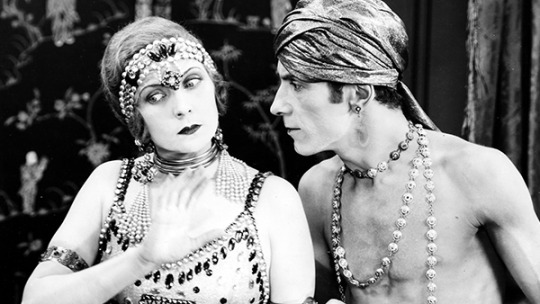
New York Times’ film critic Mordaunt Hall was beyond effusive in his review of Ernst Lubitsch’s 1926 comedy souffle SO THIS IS PARIS (’26) describing it as a “gay picture” which “hails from the workshop of that master director Ernst Lubitsch” and is doing its share to “uphold the screen art…’” He added that the “farce comedy is titivated with satire. It is a farcical yarn that keeps one amused from the start. The publication named the romantic roundelay starring Monte Blue, Patsy Ruth Miller, Lilyan Tashman and Andre Beranger, as one of the top ten films of the year.
Though several of Lubitsch’s silent Hollywood films have been released on DVD or aired on TCM, that hasn’t been the case with SO THIS IS PARIS, because the comedy didn’t have a score until now. The virtual TCM Classic Film Festival has the “Lubitsch Touch” Sunday evening with the world premiere of the new restoration of SO THIS IS PARIS, presented in a 2K scan off the Warner Bros. nitrate complete with a lively original organ score by and performed by Ben Model.
Over the years, TCM had licensed Model’s scores for silent films in the public domain he had initially done for home video including Baby Peggy’s THE FAMILY SECRET (‘24) and Marion Davies’ WHEN KNIGHTHOOD WAS IN FLOWER (‘22). One of the top accompanists and composers of silent film scores, Model had long wanted to work with TCM to commission new scores for their scoreless silent films in their library. After discussions with Charles Tabesh, TCM’s SVP for programming and content strategy, Model was able to score SO THIS IS PARIS.
“I knew SO THIS IS PARIS had been shown at the TCM Film Festival a few years prior,” said Model. “I knew this is a film that Warners’ controls. It’s a film I don’t have to convince anybody about… It’s already on everyone’s radar. I also knew that the Library of Congress had material on it.” And, it turned out TCM had scanned its print of the film. “They sent me a file and I scored the film.”
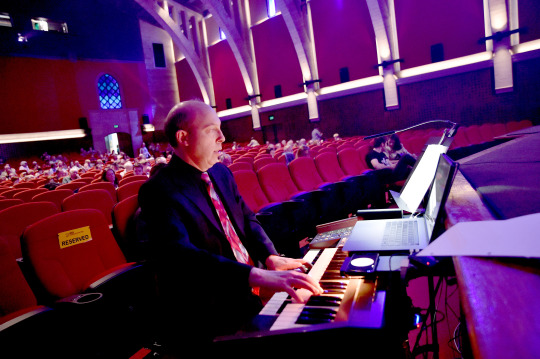
Surprisingly, Model doesn’t compose or play on an actual mighty Wurlitzer, he utilizes a virtual one using a computer program that “behaves like an actual organ console would.” Model watched the film once and took a lot of notes for himself: “story notes where I’m writing down what happens in the scene, what mood I think it would be. Sometimes I’ll write down this should be a minor waltz or something like that. I will also notate for myself in boldface visual cues. Not in a Mickey Mouse coconut sounds when somebody gets hit on the head kind of thing, but just so I can see it at a dramatic moment. “
There’s a scene in the beginning of the film where the one couple is rehearsing this Arabian dance and there is a man playing the piano. “We get a glimpse of the sheet music,” Model noted. “I thought just in case there are any musicians who are reading [the sheet music], I actually transcribed the first eight or nine ears of the ‘Dance of the Despair’ and it kind of works. “
He doesn’t write all the music out when he’s composing. “I improvise, although when I’m recording, it’s more like I improvise until it’s right. It’s a form of composition where I’m not physically writing notes on a piece of paper. But I still think of it as composition and not just making music until the scene is over. Improvisation was a technique that organists knew.”
He learned as a young man from the legendary silent film accompanist Lee Erwin that silent film music “should be interesting enough to hold you, but not pretty enough to distract you. The idea is because silent film is its own universe. I think the idea it to support the film and help the audience. Boost then up into the world and keep them in that world.” The biggest challenge scoring the film is the three minutes and 13 second Charleston party sequence “where nothing happens,” noted Model. “The film is forward motion and dramatic action then the movie stops. It’s just shots of a lot of people dancing. I didn’t just want to play until the scene was over. I wanted to try and map something out.”

So, Model watched the sequence, took down the timing and even created a spreadsheet “so I could figure out not only how many seconds each the segments are. I was able to break it down and discover the internal logical of the editing. I came up with a tempo which is a Charleston tempo or a tempo that the Charleston would be played it.” He chose not to include the famous Charleston music in the sequence because he thought it would be a distraction. “I chose to play music that was at the Charleston tempo so you could concentrate on what was being done on screen.”
#silent film#1920s#So this is Paris#Ernst Lubitsch#TCM#Turner Classic Movies#TCMFF#Ben Model#scoring#Susan King
65 notes
·
View notes
Photo

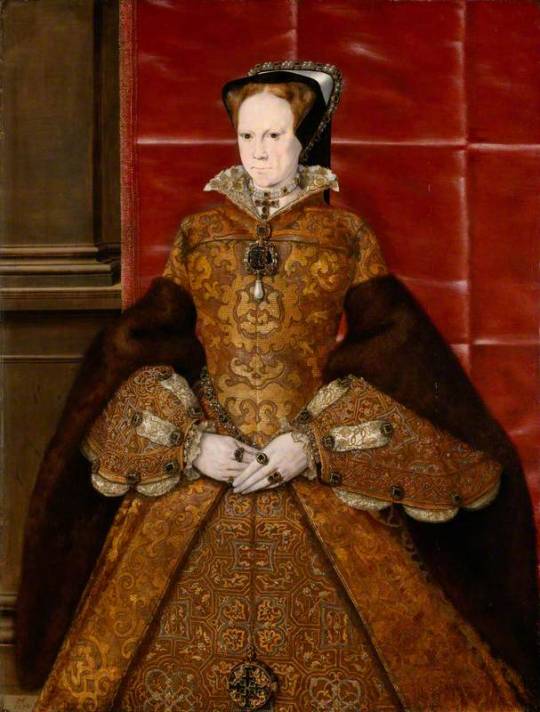
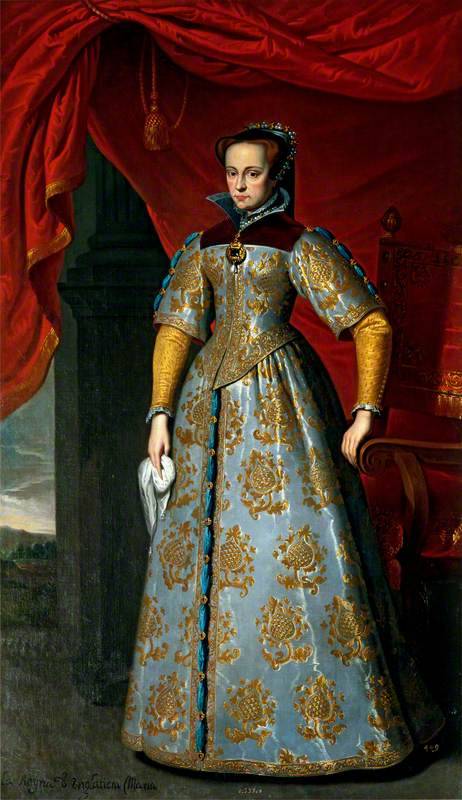
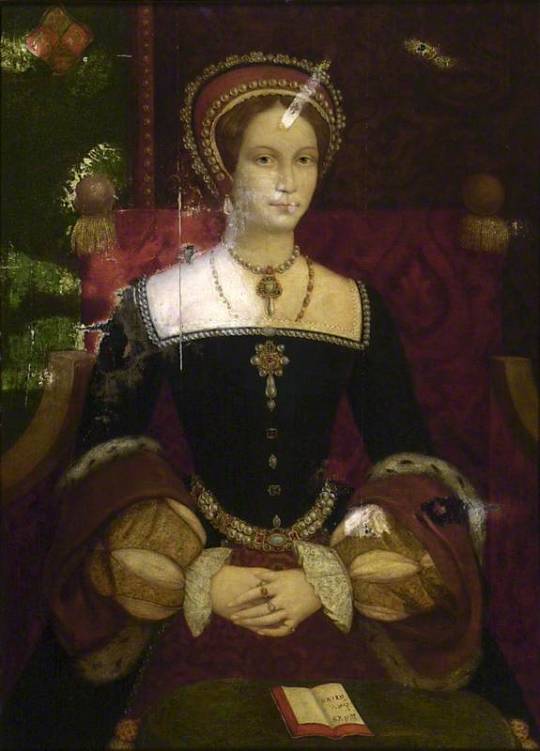
A study of the rise of Mary Tudor as Queen of England.
“On the 4th July 1553, two days before Edward Vi's death, Mary "set out secretly from Hunsdon" in Hertfordshire and travelled to Sawston Hall in Cambridgeshire, the home of sir John Huddleston. Two days later her party moved on to the earl of Bath's house in Suffolk, Hengrave Hall. They reached lady Burgh's residence, Euston Hall, near Thetford, on the 8th July.
There "she was told of the king's death by her goldsmith, a citizen of London, newly returned from the City", and on "this account she stayed there no longer, but hurried on to her house at Kenninghall". The news was confirmed by Doctor John Hughes and Mary decided to challenge the duke of Northumberland for the throne. [...]
She was accompanied only by her household servants, numbering no more than sixty, according to Robert Wingfield. Among the principal members of her retinue, Robert Rochester, Edward Waldegrave, sir Francis Englefield, Henry Jerningham, and her secretary John Bourne, only one was a knight.
On the 9th July she sent to the council in London, commanding their obedience and proclaiming herself queen. Simultaneously she sent out letters "in all directions to draw all the gentlemen of the surrounding countryside to do fealty to their sovereign".
Sir Edward Hastings was ordered to support her in Middlesex and Buckinghamshire. Within three days she had been joined by the earl of Bath, sir Thomas Wharton, sir John Mordaunt, sir Richard Southwell, sir William Drury, sir Edmund Peckham, Thomas Morgan, Richard Freston, Ralph Chamberlain, Robert Strelley, and others.
Sir John Huddleston while on his way to Mary encountered Henry Radcliffe, one of the sons of the earl of Sussex, carrying letters to London from his father. He was conveyed to Mary and soon the earl of Sussex, sir Thomas Wharton's brother-in-law, had also joined her. On the 12th July she moved over the Suffolk border to the castle of Framlingham, joined en route by sir Thomas Cornwallis.
The same day Norwich, which had initially refused to open its gates to her messengers on the 11th, became the first town to declare for Mary. Henry Jerningham on the 15th heard of six ships (sent by Northumberland to prevent her escaping to the continent) lying off Great Yannouth. The town had committed itself to Mary after its municipal representatives had witnessed her proclamation in Norwich. By the time he arrived in the town the captains had rowed back aboard.[...]
The ships furnished Mary's swelling ranks of supporters with ordnance. The areas around her Hunsdon residence in Berkshire, Buckinghamshire, and Oxfordshire provided substantial numbers under sir Thomas Wharton, sir Edmund Peckham, and lord Hastings. (Hastings was said to have brought over a force of 4,000 troops from Middlesex and Buckinghamshire.)
The fact that within days of her letters, she had been joined by gentry with armed and provisioned retinues and that even before this happened she sent to be proclaimed in London, provides powerful evidence to support the suggestion "that Mary had lined up her loyal followers in readiness in these areas... well before Edward's death"
Northumberland left London through Shoreditch on the 13th July and reached Cambridge with an army of about 3, 000 by the 16th. He had followed the strategy in his Letters Patent, appealing to xenophobia in the light of anxieties about female authority by invoking the fear of greater foreign influence or invasion. At 7pm on the 16th in London the gates of the Tower "upon a sudden was shut, and the keyes caryed upp to the quene Jane".
Two days later a dozen of the Councillors locked up in the Tower (the earls of Bedford, Arundel, Pembroke, Shrewsbuiy, and Worcester, lords Paget, Darcy and Cobham, Cheyne, Cheke, Paulet and sir John Mason) slipped away from the Tower to the earl of Pembroke's residence at Baynard's castle. There they were joined by the mayor and certain aldermen.
A proclamation for Mary was drawn up and then two heralds, around 6pm on the 19th were sent into London to St. Paul's Cross in Cheap. [...] Disunity in his {Northumberland’s} army had already led to the defections of lords Howard and Grey, and when on the 18th, as he moved towards Mary's army, the news of the earl of Oxford's defection reached him through Henry Gate, he retreated to Bury and then to Cambridge. There he learnt on the 19th that London and the Council had proclaimed Mary in his absence. Northumberland published the Council's proclamation himself the next morning.
Lord Paget and the earl of Arundel arrived on the 20th at Framlingham with a letter from the council and the mayor and aldermen's London proclamation of Mary, to offer their submission. The earl of Arundel was sent to Cambridge the following day to arrest Northumberland, whose army had already begun to disperse and who had been belatedly surrounded and incarcerated by the mayor.
Contemporary chroniclers believed that her victory was the result of her popularity. One observer, the Spaniard Antonio de Guaras claimed: "es de marauillar el amor que este pueblo tiene a esta Señora que cierto offenden a nuestro Señor en ello porque le dexan de querer y la adoran". [...]
The provincial rising's success against central government had relied on the support of middle-ranking gentry in the counties, several of whom had connections with the fallen Howards. Mary's local support can not be explained though, as that of an 'out' faction, excluded from the patronage of the regency government. It was, however, Catholic and conservative: "activists in Mary's coup were Catholic nobles and gentlemen". In Norfolk alone of fourteen magnate families, the two who backed her, sir Henry Bedingfield's and sir Robert Southwell's were both strongly Catholic.
“The list of those swearing loyalty to Mary during these early days, like the list of those receiving rewards for service at Kenninghall and Framlingham, contains catholic name after catholic name... when in 1561 Dr. Sanders composed a list of catholic gentlemen who were suffering as a result of the accession of a protestant monarch it bore an uncanny resemblance to the earlier list of those rewarded in 1553: Browne, Waldegrave, Hastings, Sir Thomas Wharton, and Sir Thomas Mordaunt.
No nobleman sympathetic to protestantism supported Mary, and most of those who came to her aid were committed catholics. Thus the earl of Derby, for example, had opposed the religious changes of Edward's reign, Lord Dacre, who marched south to join Mary, had voted in the House of Lords against the 1549 Prayer Book and was to remain a catholic in Elizabeth's reign, and Lord Windsor, who assisted Hastings in proclaiming Mary in Buckinghamshire, had persistently voted against the religious innovations of the previous reign. Thomas West, Lord Delaware, had opposed the Edwardian Prayer Books as he had earlier opposed the dissolution of the monasteries. The earl of Bath, although he played little part in public affairs in Edward's reign, had voted against the bill for the marriage of priests.”
A contributory factor in her success may have been the brutal suppression by Northumberland four years earlier in 1549 of a serious popular rising in Norfolk - Keft's rebellion. This was one reason, which had persuaded Northumberland to take the field in person: "because that he had atchieved the victory in Norfolke once already, and was therefore so feared, that none durst lift up their weapon against him".'°° Fear of Northumberland may have driven some Norfolk towns into the arms of the Marians. This can not account for her proclamations' success elsewhere, in defiance of the government.
The coup's allegedly popular character ("noblemen's tenauntes refused to serve their lordes agaynst quene Mary"),'°' the notion that an act of national judgement swept her to the throne, ignores the role of municipal hierarchies. News of the scale of the risings in the provinces was instrumental in persuading peers on the Council to desert Northumberland. Although the struggle centred on East Anglia, the region of Mary's affinity, it also enjoyed key backing elsewhere; in Oxfordshire (where sir John Williams proclaimed Mary), Buckinghamshire (where sir Edward Hastings and lord Windsor did the same), and the Thames Valley: "the queen learnt from her scouts, who were ranging far and wide, that the people of Buckinghamshire, Oxfordshire, Berkshire and Northamptonshire were in arms and supported her cause".'°
In other parts of the country the earl of Oxford (allegedly persuaded by his household servants), lord Rich, the earl of Derby and lord Dacre (in the north), sir Thomas Cheney and sir John Gage marshalled support.'° In Wales where Mary had resided as princess of Wales from 1525-1 533, in Denbigh and Beaumaris, the Northumerland adherents Ellis Price and Richard Bulkeley declared lady Jane Grey queen and Mary a traitor. These decisions were quickly reversed and the "lies of Beaumaris" were denounced by the bard Siôn Brwynog: the country "wished for its welfare", "judging her to be Queen".'°
Others welcomed the "genial Queen from the heart of Gwynedd with her fortunate face" and the "silencing [of] those Saxons".'°The pleasure and fidelity of the Welsh, at the victory of the 'Welsh' Tudor dynasty reflected an affinity for their countrymen. In London on the 19th, in contrast to the silent reception of the herald's proclamation of Jane, Mary's had been received joyously: "The bonefires weare without nomber, and what with showtynge and crienge of the people and ringinge of the belles, theare could no one heare amoste what another sayd, besides banketyngs and synging in the street for joye".'°Another anonymous London chronicle recorded similarly that "the Joye whereof wonderfull for some caste money abrod, & some made bonfyars thorowe the whole cyte: the prayses were geuen to God in the churches with te deum & orgaynes, belles ryngynge & euery wher the tables spredd in the stretes, meate & drynke plentye, wyne geuen ffrely of many men".
The ringing of bells was a symbolically Catholic mode of expression. Bells had been being exported (cf. Thomas Pery, p.3) and taken down since the 1530s. Diego de Azevedo, resident in London at the time of the accession crisis, described Mary's victory:
“La Infanta Maria hermana del Rey muerto, sabida la muerte de su hermano, se fue al [...], y alli se fueron para ella todos los mas principales del reyno, y de alli se vino al paso de concetayna, y hizo muy breuemente mas de treinta mu hombres, y con ellos se vino la buelta de Londres.
Sabido esto por los del reyno, todos se alcaron por ella, y tomaron en prision al Duque Baurique, y al rey, y ala reyna nuevamente eligidos, y abs demas que eran en su favor y la Reyna Maria, (digo de Inglaterra) entra oy dia, que esta escribo, o mañana en Londres, a donde luego sera jurada, y cortara las cabecas a todos, ecepto ala reyna, que fue eligida, que desta dizen que auido piedad; y la reyna, y el reyno queda todo pacifico.
Por cierto que parescen cosas increybles estos acontecimientos, los quales yo creo que no pueden acaecer en ninguno reyno. La reyna es cristianissima, y asi la ha ayudado Dios: bo primero que haze es tomar la fe Catholica en su ser, como de antes: tendra poco que hazer en ello, porque los mas de los erejes, lo eran mas de miedo del Rey, y Protetor, que de sus voluntades. Prosperos succesos han sido todos para su Mag. y el mas prospero es que tiene salud y trata negocios.'°
According to Azevedo's account, the key to her success had been 'todos los mas principales del reyno' declaring for her and persuading the whole kingdom to rise up 'por ella'. Even the partisan Azevedo recognised that Mary's victory was not a triumph of Tudor legitimism.
[...] After her proclamation in London on the 19th, "that same nyght had the [most] parte of London Te Deum, with bone-fyers in every strete in London, with good chere at every bone[f'er], the bells ryngynge in every parych cherch".'°The credibility of this evidence is supported by the fact that the so-called Tower chronicler is believed to have been a reformer and adherent of Jane Grey. The story of Mary's accession is perhaps powerftilly suggestive that her Catholicism played a greater role in her success than is credited.
At Ipswich Mary was presented with a golden heart inscribed 'the heart of the people'. She visited her father's palace of Beaulieu at Colchester, sir William Petre's residence, Ingatestone Hall in Essex, Pirgoe, and then Havering. Finally she made her entry into London on the evening of the 3rd August 1553: the "nomber of velvet coats that did ride before hir, aswell strangers as others, was 740; and the nomber of ladyes and gentlemen that folowede was 180″. She was accompanied by her half-sister Elizabeth "and a grette company of ladys wyth hare", the guard and "after them Northampton and Oxfordshire men, and then Buckinghamshire men, and after them the lordes' servants; the whole nomber of horsemen weare esteemed to be about 10,000. A central place was given to the men from the counties who had been key in her success. At Whitechapel "the mayer with the aldermen reseved hare, and he delyveryd hare the swerd, and she toke it to the erie of Arnedelle, and he bare it before hare, and the mayer the masse [mace].”
Three political prisoners, symbolic of the religious and political reversal represented by Mary, were released by her when she reached the Tower; Thomas Howard, duke of Norfolk, Edward Courtenay, marquis of Exeter, and Stephen Gardiner, bishop of Winchester. The conservative Howard had been imprisoned when it had become clear that Henry Vifi was dying; a victim of the reformed faction which came to power with Edward's accession. He had remained in prison throughout the young king's reign. Courtenay's father had been a victim of Henry's decision in 1538 to eliminate all living members of the Plantagenet line and had spent most of his life in prison. Gardiner had been committed to the Fleet on the 25th September 1547, for his protest at the issuing of the First Book of Homilies on the 31st July.[...]”
Quoted from: SAMSON, Alexander Winton Seton.“The marriage of Philip of Habsburg and Mary Tudor and anti-Spanish sentiment in England : political economies and culture, 1553-1557″. pp. 43-54.
You may find it in this link: https://core.ac.uk/download/pdf/30695717.pdf
#Mary I#Queen Mary I#Queen Mary I of England#Queen Mary of England#Marye the Quene#Mary Tudor x Jane Grey#Lady Jane Grey#Mary Tudor#House of Tudor#Tudor dynasty#Tudors#The Tudors#Queen of England
14 notes
·
View notes
Text
BOTTOMS UP
April 13, 1934
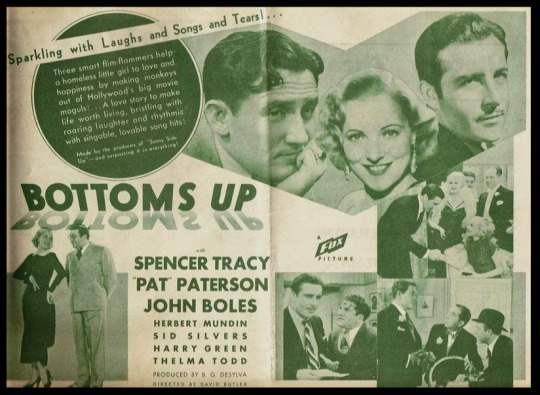
Directed by David Butler
Produced by Buddy G. DeSylva for 20th Century-Fox
Written by David Butler, Buddy G. DeSylva, and Sid Silvers
Choreography by Harold Hecht
Synopsis ~ Spencer Tracy stars as fast-buck promoter Smoothie King. Our hero's latest scam is to pass off Hollywood extra Wanda Gale (Pat Patterson) and forger Limey Brook (Herbert Mundin) as British nobility, getting both of them prestigious jobs at a movie studio. Eventually Wanda becomes a big star, falling out of love with Smoothie along the way in favor of her leading man Hal Reed (John Boles). But Smoothie takes it all in stride; after all, there's still a world full of chumps and suckers, ripe for fleecing.
CAST
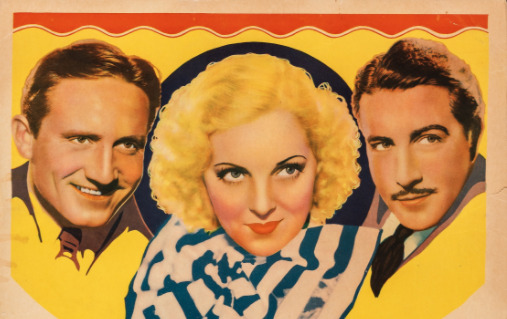
Spencer Tracy (’Smoothie’ King) won two Oscars and was nominated seven other times in his long career. This is his only musical. He also appeared with Lucille Ball in Without Love (1945).
John Boles (Hal Reed) also did Thousands Cheer (1943) with Lucille Ball).
Pat Paterson (Wanda Gale) was married to Charles Boyer. This is her only film with Lucille Ball.
Herbert Mundin (Limey Brook) was an English-born actor making his only film with Lucille Ball.
Sid Silvers (Spud Mosco) was also the co-writer of this film. This is his only movie with Lucille Ball.
Harry Green (Louis Baer) makes his only film with Lucille Ball.
Thelma Todd (Judith Marlowe) was known as ‘The Ice Cream Blonde' and ‘Hot Toddy'. This is her only film with Lucille Ball.
Robert E. O'Connor (Detective Rooney) went on to do five more films with Lucille Ball.
Dell Henderson (Lane Worthing) went on to do five more films with Lucille Ball.
Suzanne Kaaren (Secretary) makes her only screen appearance with Lucy.
Douglas Wood (Baldwin) also appeared with Lucille Ball in Her Husband’s Affairs (1947).
UNCREDITED CAST
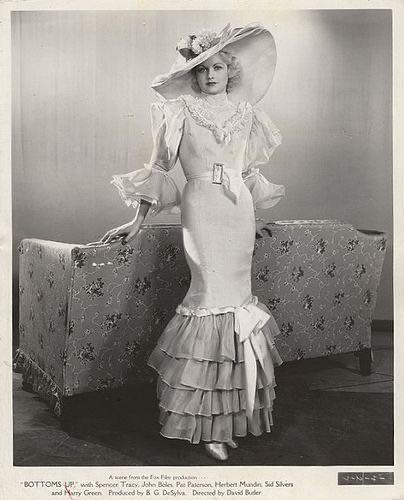
Lucille Ball* (Chorine) makes her eighth film since coming to Hollywood in 1933.
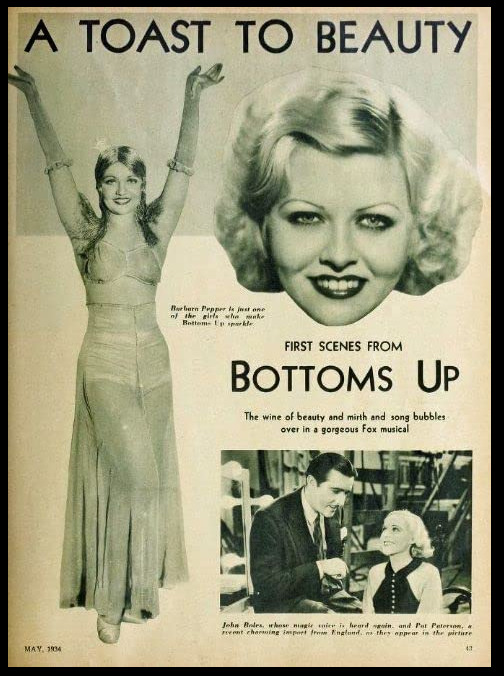
Barbara Pepper* (Chorine) made six films with Lucille Ball, including her Lucy’s first, Roman Scandals (1933). The two became friends, and she was one of the first people Lucille Ball wanted for the role of Ethel Mertz after Bea Benadaret passed. Pepper’s drinking made her a risk for the network and sponsor, but she went on to make ten appearances on “I Love Lucy”.
Chorines: Lee Auburn, Bonnie Bannon*, Lynn Bari, Dolores Casey*, Irene Coleman, Ann Darcy, Jean Gale*, June Gale, Sugar Geise, Betty Gordon, Jane Hamilton, Vivian Keefer*, Laura La Marr, Mary Lange*, Shirley Lloyd, Dona Massin, Ruth Moody, Vera Payton, Virginia Ray, Beverly Royde, Katharine Snell, Alice Stombs, Valerie Traxler
Party Guests: Richard Carle, Cecil Cunningham, Opal Ernie, Paul McVey, Ronald R. Rondell, Henry Roquemore, Loretta Rush, Larry Steers, Ferdinand Munier
Minor Roles: Peggy Beck, Georgia Clarke, Elizabeth Cooke, Patricia Dobbs, Dee Dowell, Jean Fursa, Kathryn Hankin, Betty Neitman, Ellen Thomas, Mildred Unger
* Goldwyn Girls on loan to Fox. As they are not in a Sam Goldwyn picture, they are not credited as Goldwyn Girls.
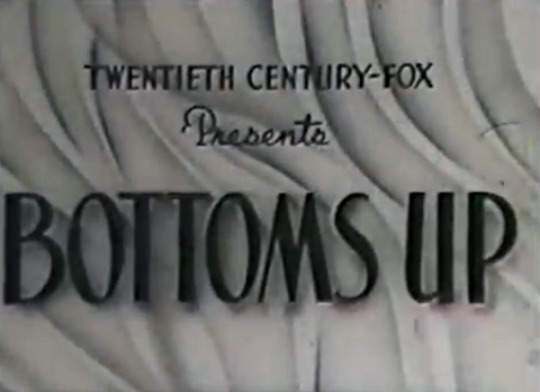
OTHERS
David Field (Reporter)
Allen Connor (Ticket Taker)
Walter Hardwick (Waiter)
Teddy Hart (Chorus Boy)
Samuel E. Hines (Bellboy)
Arthur Loft (Yes Man)
John T. Murray (Radio Announcer)
Ned Norton (Yes Man)
Frank O'Connor (Jack, Director)
Virginia Pine (Showgirl)
Sam Wolfe (Harmonica Player)
Ernest Wood (Hotel Clerk)
Johnny Boyle (Dance Specialty)
SOUNDTRACK
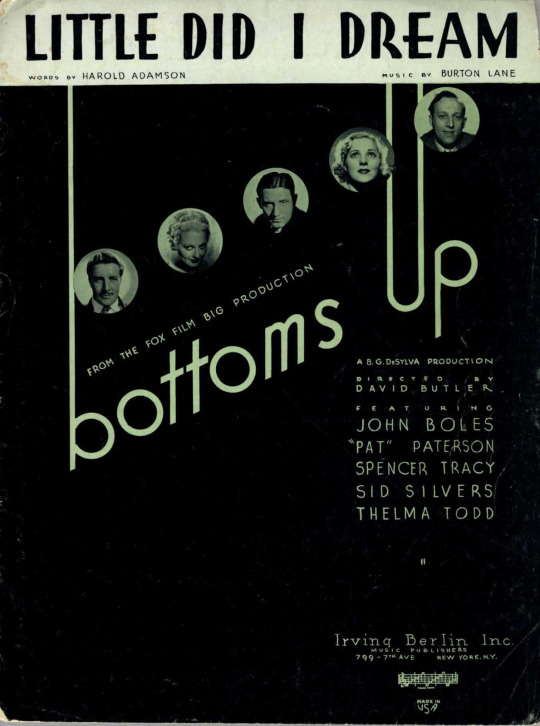
“Little Did I Dream” by Harold Adamson and Burton Lane
“Turn on the Moon” by Harold Adamson and Burton Lane
“I'm Throwing My Love Away” by Harold Adamson and Burton Lane
“Waitin' at the Gate for Katy” by Richard A. Whiting and Gus Kahn
“Is I in Love? I Is” J. Russel Robinson
Opera Singer: I've always considered myself a virtuoso. 'Smoothie' King: I didn't ask about your morals.
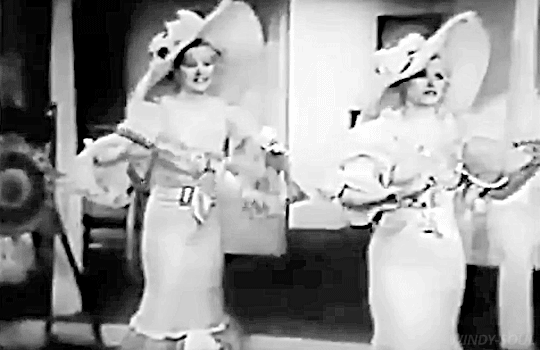
Lucille Ball was paid $75 dollars a week when she was loaned out to Fox by RKO to make this film. She appears in the song “Waitin’ at the Gate for Katy.”
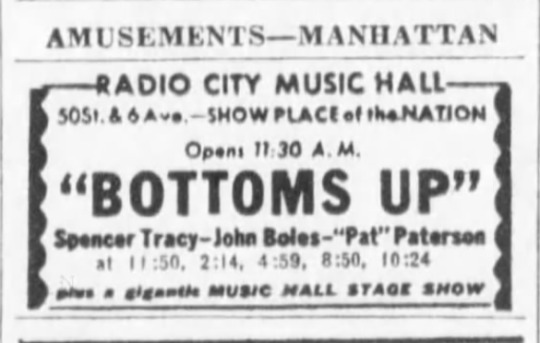
The film received a favorable review from The New York Times critic Mordaunt Hall, who called it "a neat, carefree piece of work, which is helped greatly by Spencer Tracy, Pat Paterson, an English actress who here makes her American picture bow; Herbert Mundin, Harry Green, and, to a lesser extent, by John Boles" and noted that it "has its full share of honest humor and also several tuneful songs." Nonetheless, it was a box office disappointment for Fox.
5 notes
·
View notes
Photo

Sir William Frederick Victor Mordaunt Milner, (1893–1960), 8th Baronet of Nun Appleton near York, and friend, at Parcevall Hall ..
#Sir William Milner#friend#Parcevall Hall#Skyreholme#Appletreewick#Wharfedale#Yorkshire#childhood memories#ripplefactor#rpf2
16 notes
·
View notes
Photo








“Palmy Days” opened on October 3, 1931 & was one of the most popular movies of that year. “Palmy Days” indeed; the picture netted a respectable $1,601,000 late in the depression year of 1931! Not bad for “a more or less funny diatribe” according to New York Times Film critic Mordaunt Hall, who further added, with “two or three inconsequential melodies & a great deal to gaze, including pretty damsels from the Pacific Coast & effectively photographed groups of dancers.” The (11/26/1931) Lackawanna News of New York added; “Cantor is consistently amusing & (the film) has set something of a new style in musical pictures.” YES! YES! The art deco era of Busby Berkeley escapism had arrived bringing the Goldwyn Girls with it!
#eddie cantor#charlotte greenwood#Busby Berkeley#goldwyn girls#george raft#betty grable#drag#classic comedy#old hollywood#1930s movies#art deco era#charles middleton#toby wing#paulette goddard#art deco#precode#united artists#1931 film#palmy days#doughnuts#art deco bakery#art deco pool#Sam Goldwyn#eddie sutherland
49 notes
·
View notes
Text
Commons Vote
On: Holocaust Memorial Bill Committee: New Clause 1
Ayes: 11 (100.0% Con) Noes: 182 (98.4% Con, 0.5% DUP, 0.5% Ind, 0.5% LD) Absent: ~457
Likely Referenced Bill: Holocaust Memorial Bill
Description: A Bill to make provision for expenditure by the Secretary of State and the removal of restrictions in respect of certain land for or in connection with the construction of a Holocaust Memorial and Learning Centre.
Originating house: Commons Current house: Lords Bill Stage: 1st reading
Individual Votes:
Ayes
Conservative (11 votes)
Bernard Jenkin Charles Walker Geoffrey Clifton-Brown Henry Smith Jacob Rees-Mogg John Stevenson Karl McCartney Lia Nici Peter Bottomley Richard Graham Tom Randall
Noes
Conservative (179 votes)
Aaron Bell Alan Mak Alberto Costa Alex Burghart Alicia Kearns Alok Sharma Amanda Milling Amanda Solloway Andrew Lewer Andrew Murrison Andrew Percy Andrew Rosindell Andrew Stephenson Andy Carter Anna Firth Anne-Marie Trevelyan Anthony Browne Antony Higginbotham Ben Everitt Ben Spencer Bill Wiggin Bob Blackman Bob Seely Brandon Lewis Brendan Clarke-Smith Caroline Ansell Caroline Dinenage Caroline Johnson Caroline Nokes Cherilyn Mackrory Chris Clarkson Chris Grayling Chris Green Chris Loder Chris Philp Craig Tracey Craig Williams Damian Collins Damian Green Damian Hinds Danny Kruger David Duguid David Jones David Simmonds Dean Russell Dehenna Davison Derek Thomas Duncan Baker Eddie Hughes Edward Argar Edward Timpson Fay Jones Felicity Buchan Fiona Bruce Gagan Mohindra Gareth Bacon Gareth Davies Gary Sambrook George Eustice Gordon Henderson Graham Stuart Greg Smith Guy Opperman Heather Wheeler Helen Grant Helen Whately Holly Mumby-Croft Huw Merriman Iain Duncan Smith Iain Stewart Jack Brereton Jackie Doyle-Price Jacob Young James Davies James Grundy James Morris James Wild Jamie Wallis Jane Hunt Jeremy Quin Jeremy Wright Jerome Mayhew Jesse Norman John Hayes John Howell John Lamont John Whittingdale Jonathan Djanogly Julian Lewis Julian Sturdy Julie Marson Justin Tomlinson Karen Bradley Katherine Fletcher Kelly Tolhurst Kevin Foster Kevin Hollinrake Kieran Mullan Laura Farris Laurence Robertson Leo Docherty Lisa Cameron Louie French Luke Hall Maggie Throup Marcus Jones Maria Caulfield Mark Fletcher Mark Logan Mark Spencer Martin Vickers Mary Robinson Matt Warman Matthew Offord Michael Ellis Michael Fabricant Mike Freer Mike Wood Mims Davies Miriam Cates Nadhim Zahawi Neil Hudson Neil O'Brien Nick Fletcher Nicola Richards Nigel Huddleston Nigel Mills Paul Holmes Paul Howell Paul Scully Penny Mordaunt Peter Aldous Philip Dunne Philip Hollobone Priti Patel Rebecca Harris Rebecca Pow Richard Drax Richard Fuller Robbie Moore Robert Courts Robert Halfon Robert Largan Robert Neill Robert Syms Robin Millar Robin Walker Ruth Edwards Sally-Ann Hart Saqib Bhatti Sara Britcliffe Sarah Dines Scott Mann Selaine Saxby Shailesh Vara Shaun Bailey Sheryll Murray Simon Baynes Simon Clarke Simon Fell Simon Hart Simon Hoare Simon Jupp Stephen Metcalfe Steve Baker Steve Brine Steve Double Steve Tuckwell Stuart Anderson Stuart Andrew Theo Clarke Theresa Villiers Tobias Ellwood Tom Hunt Tom Pursglove Tracey Crouch Trudy Harrison Will Quince William Cash
Democratic Unionist Party (1 vote)
Ian Paisley
Independent (1 vote)
William Wragg
Liberal Democrat (1 vote)
Wera Hobhouse
0 notes